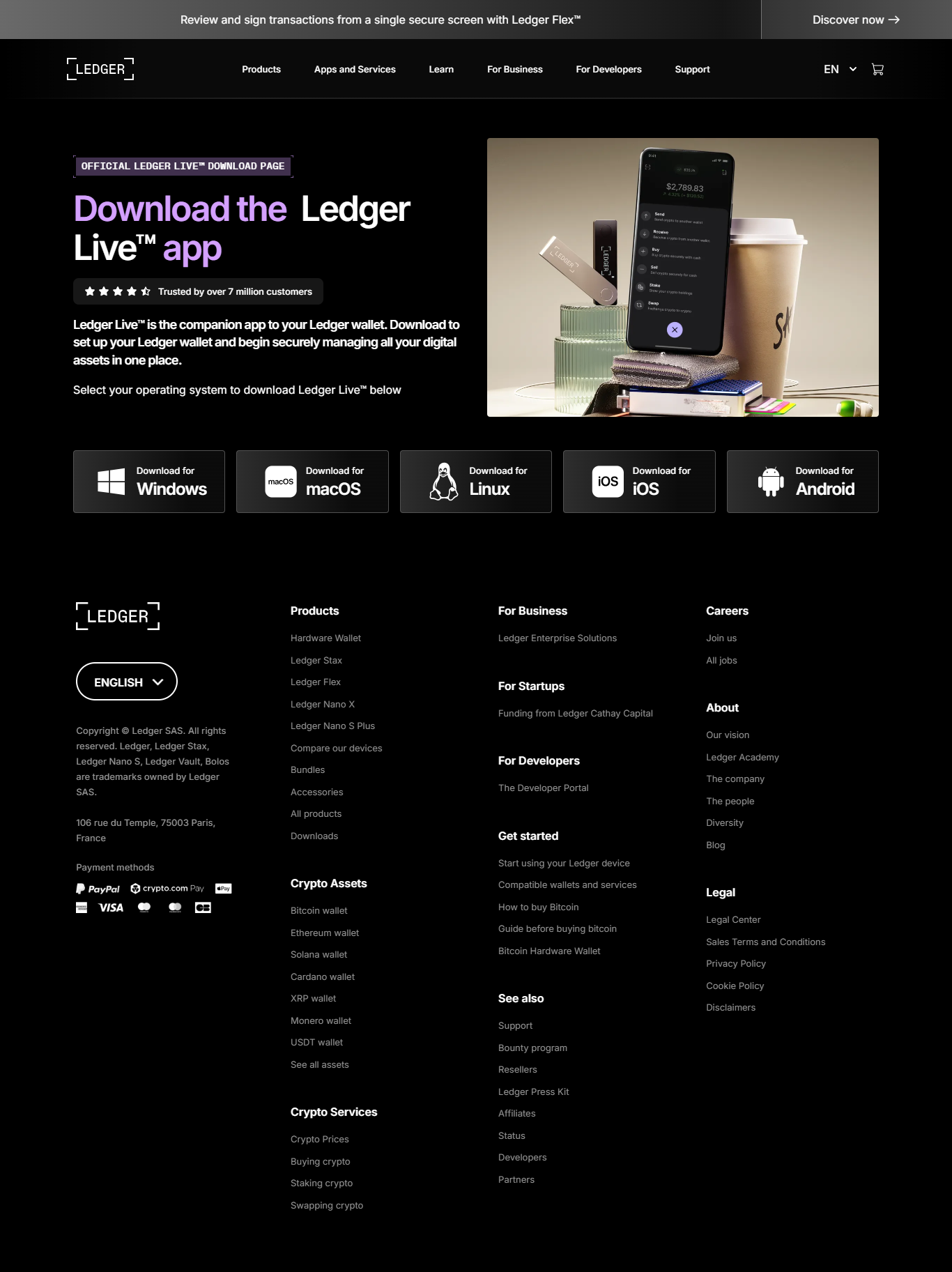
Ledger Live Login — A Complete 2025 Guide for Secure Crypto Access
Discover how Ledger Live Login works, how hardware wallet authentication keeps your crypto protected, and how to navigate every step safely.
Understanding Ledger Live Login in Simple Terms
Unlike traditional apps that rely on usernames and passwords, Ledger Live Login is fundamentally different. There is no account to sign into, no cloud dashboard, and no server storing your identity. Instead, Ledger uses your physical hardware wallet — the Ledger Nano S Plus, Ledger Nano X, or Ledger Stax — as the authentication device.
Every time you open Ledger Live, the app verifies the legitimacy of your hardware wallet through cryptographic attestation. This ensures that only you — the person holding the device — can gain access to your crypto balances, NFTs, staking features, and on-chain operations. This structure eliminates major risks like phishing attacks, SIM swapping, password leaks, and database breaches.
🔒 Physical Login
You authenticate through your Ledger device, not through the internet.
🧬 Secure Element Chip
Ledger's encrypted chip keeps your private keys offline permanently.
🛡 Zero Password Exposure
No passwords mean no leaks, no phishing success, and no hacks.
How Ledger Live Login Works (Detailed Breakdown)
If you imagine the login process as a “handshake” between the Ledger Live app and your hardware wallet, you’re already halfway there. Here is what happens behind the scenes:
1. You Open Ledger Live
The app prepares its secure channel to communicate with your hardware wallet.
2. You Connect Your Ledger Device
This can be done via USB (Nano S Plus / Stax) or Bluetooth (Nano X).
3. You Enter Your PIN on the Device
The PIN never touches Ledger Live or your computer, preventing keylogging risks.
4. Ledger Live Performs Device Authentication
The app checks whether your Ledger is genuine and uncompromised using encrypted signatures.
5. Access Granted to Your Crypto Dashboard
You can now buy, sell, swap, stake, or manage assets across dozens of blockchains.
Why Ledger Live Login Is Considered the Gold Standard in Crypto Security
Most online platforms rely on centralized authentication, making them vulnerable to database breaches or social engineering attacks. Ledger has flipped this approach entirely by eliminating online login credentials. Your device is the key. Your recovery phrase is the backup. Nothing else exists to compromise.
🧱 No Passwords
No passwords stored = no passwords to steal.
🔐 Hardware-Based Authentication
Your device verifies every transaction physically.
🔭 Offline Private Key Storage
Your private keys never leave the secure element chip.
Troubleshooting Ledger Live Login Problems
If Ledger Live doesn’t recognize your device or the login process fails, it’s usually one of a handful of common issues. Here’s how to fix them:
📌 Ledger Device Not Connecting
• Replace your USB cable • Try a different USB port • Avoid using USB hubs • Update both firmware and Ledger Live
📌 Bluetooth Not Pairing (Nano X)
• Reset Bluetooth on your phone • Keep the device within 1–2 meters • Delete older pairing profiles
📌 PIN Issues
Entering your PIN incorrectly resets your device after 3 attempts. Always memorize your PIN securely and avoid saving it digitally.
“With Ledger Live Login, you’re not just accessing a wallet — you’re unlocking a fully decentralized, hardware-verified portal that keeps your digital wealth out of reach from online threats.”
Ledger Live Login vs Traditional Crypto Login Systems
| Aspect | Ledger Live Login | Password-Based Login |
|---|---|---|
| Authentication Type | Hardware-only | Online credentials |
| Risk of Theft | Extremely low | Moderate to high |
| Private Key Storage | Offline secure element | Online or software-based |
| Recovery Method | 24-word recovery phrase | Email/SMS reset |
Ledger Live Login — Frequently Asked Questions
Does Ledger Live require a password?
No. You only need your Ledger device and PIN.
Can someone log in without my Ledger device?
Impossible. Ledger Live cannot access funds without the physical device.
Is the recovery phrase used during login?
No. The phrase is for restoring your wallet, not logging in.
What if I lose my Ledger device?
You can restore your funds on a new Ledger device using your 24-word seed.
Final Thoughts: Why Ledger Live Login Stands Out
The Ledger Live Login experience is designed to offer maximum security with minimal complexity. By removing the need for online credential systems, Ledger empowers users with a hardware-first authentication method that significantly reduces hacking risks.
Whether you're managing a diverse portfolio, exploring decentralized finance, or safeguarding long-term holdings, Ledger Live ensures you stay protected with offline private key storage, physical validation, and user-friendly crypto management.
If you care about true security, Ledger Live Login is your gateway to safe, confident crypto ownership.